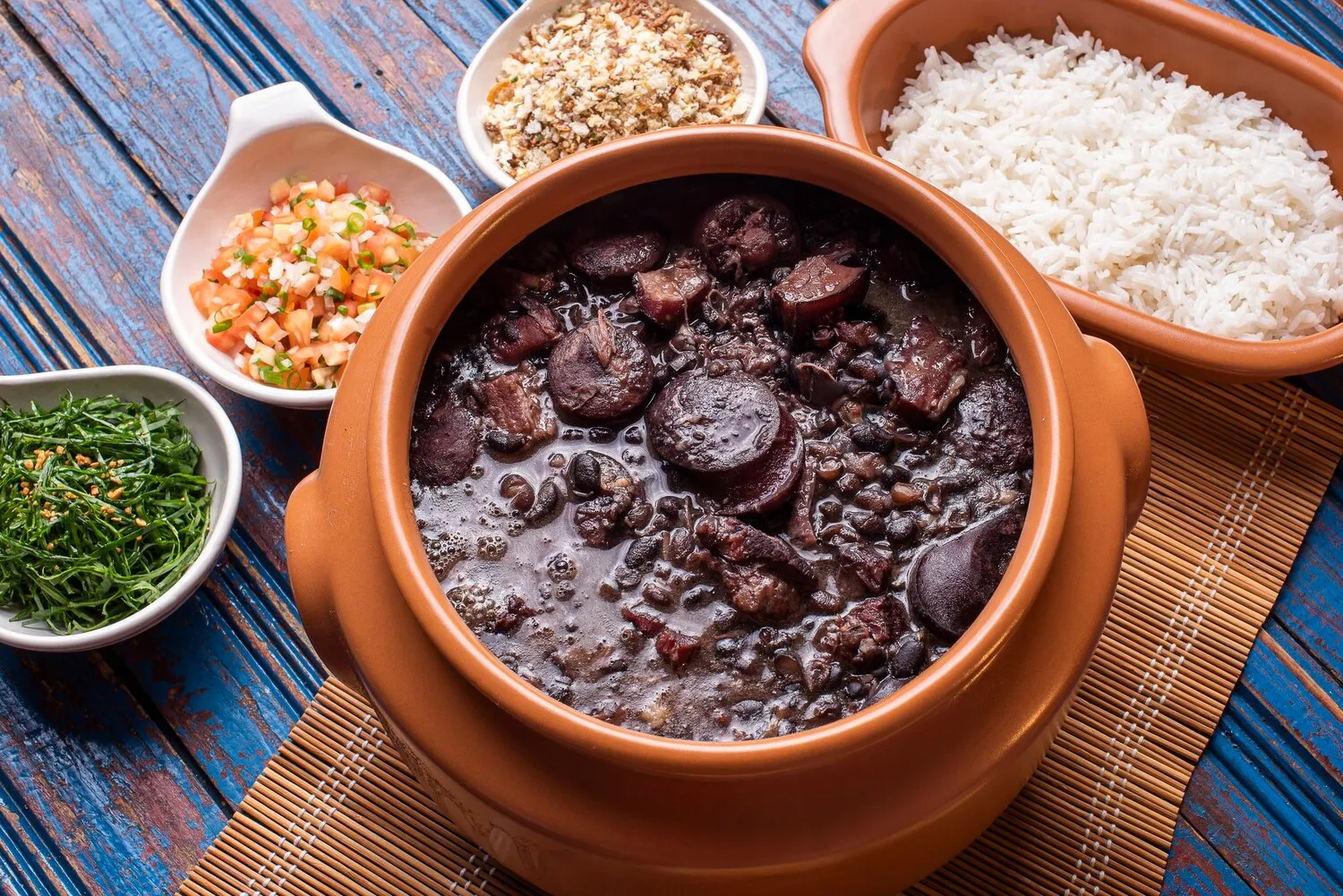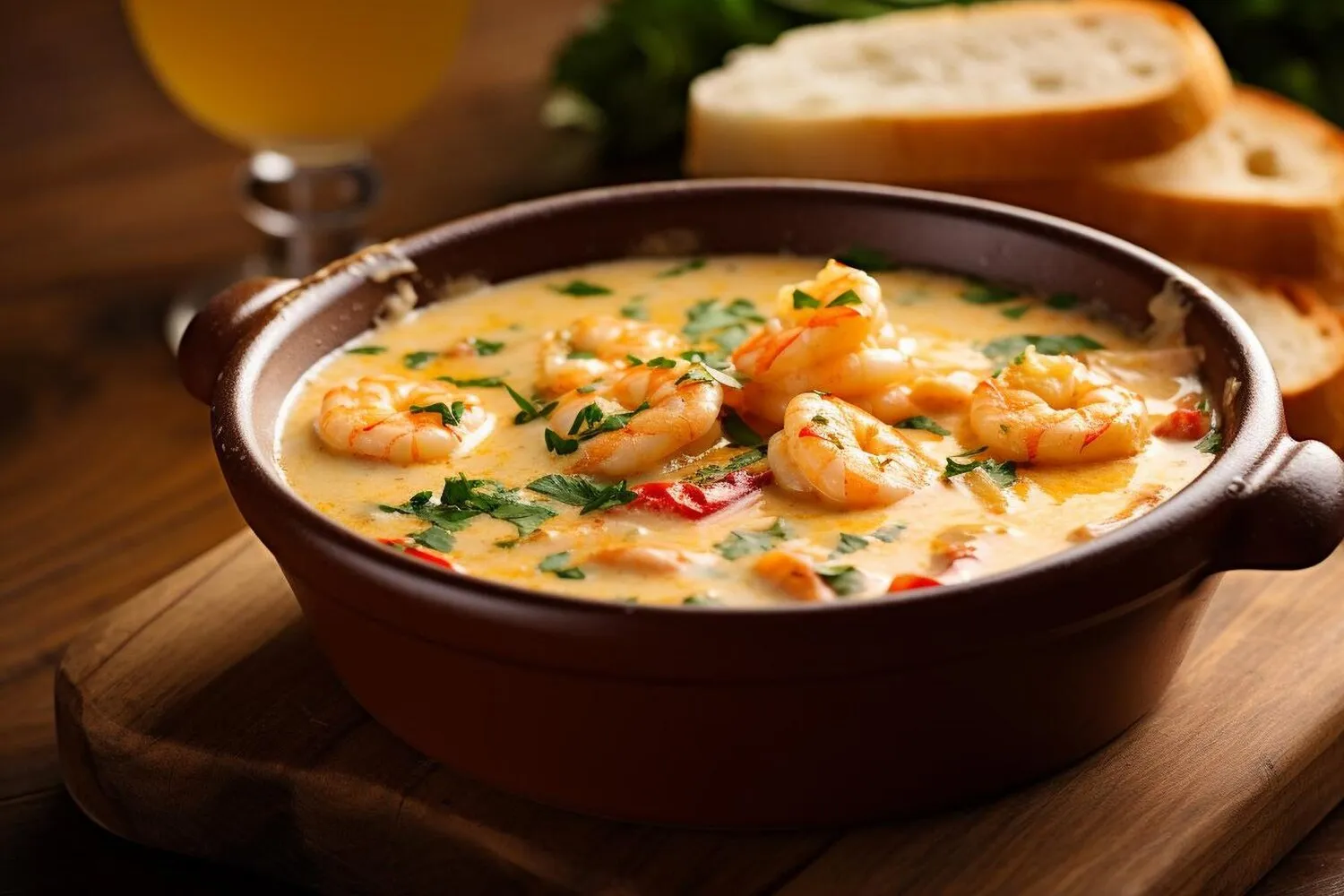
Feijoada
A traditional Brazilian black bean stew with various cuts of pork and beef.
Nutrition Facts
* The % Daily Value (DV) tells you how much a nutrient in a serving of food contributes to a daily diet. 2,000 calories a day is used for general nutrition advice.
The origins of feijoada are debated, but a popular theory suggests it evolved from the need to utilize all parts of the pig during the colonial era. Enslaved Africans are often credited with combining these less desirable cuts with black beans, a staple in their diet, to create a hearty and flavorful stew. However, some historians argue that feijoada is more likely a creation of the Portuguese, who have a long tradition of stewed meat dishes.
Feijoada is considered Brazil's national dish and is deeply embedded in the country's culinary identity. It's more than just a meal; it's a social gathering and a symbol of Brazilian hospitality and communal eating.
Sunday Tradition
Feijoada is traditionally eaten on Saturdays or Sundays, making it a leisurely and festive meal enjoyed with family and friends. It's often served as a celebratory dish for special occasions.
Regional Variations
While the core ingredients remain consistent, regional variations exist across Brazil. Some regions might include different cuts of meat or use local spices to enhance the flavor profile.
Served with Accompaniments
Feijoada is typically served with an array of accompaniments that complement the richness of the stew. These often include white rice, farofa (toasted cassava flour), collard greens (couve), orange slices, and hot sauce. These additions add texture, brightness, and acidity to balance the meal.
Feijoada boasts a rich, savory, and smoky flavor profile, deeply influenced by the combination of black beans, various cuts of pork and beef, and aromatic seasonings.
The dominant flavor is a deep, earthy savoriness from the black beans, complemented by the smoky and salty notes of cured and smoked pork products like bacon, sausage (linguica and paio), and dried beef (carne seca). Fresh pork adds richness, while beef provides a different textural element. Garlic, onions, bay leaves, and sometimes chili peppers contribute aromatic layers and subtle heat. The overall experience is a hearty, umami-rich, and comforting stew.
Soaking the Beans
Soaking the black beans overnight (or for at least 8 hours) is crucial for reducing cooking time and improving digestibility.
Salting the Meat
Salting the meat helps draw out excess moisture and intensify the flavors. Consider salting tougher cuts a day or two in advance.
Cooking Time
Allow ample time for the feijoada to simmer. The longer it cooks, the more the flavors will meld and the meat will become tender. Aim for at least 2-3 hours of slow simmering.
Desalting the Meats
Some of the meats used in feijoada, especially the dried or cured varieties, are quite salty. Soaking them in several changes of water before cooking is vital to prevent the dish from being overly salty.
Explore additional Traditional Stew dishes and restaurants
Explore Traditional StewDiscover top dining spots and culinary experiences in Belo Horizonte.
Explore Belo HorizonteLearn more about the food culture, restaurant scene, and culinary heritage of Brazil.
Explore Brazil
